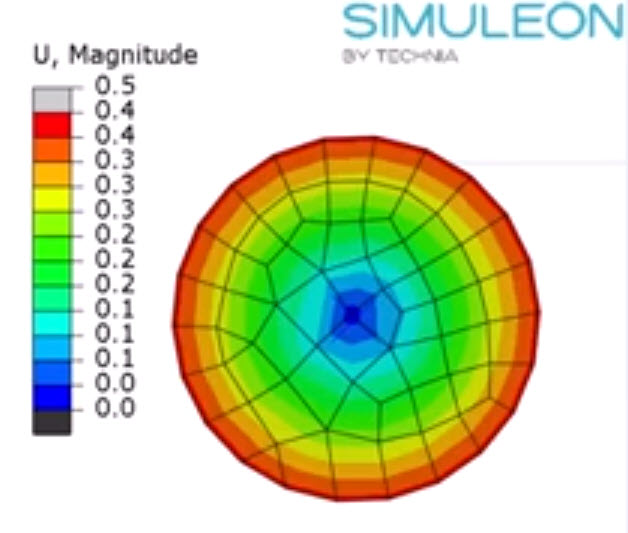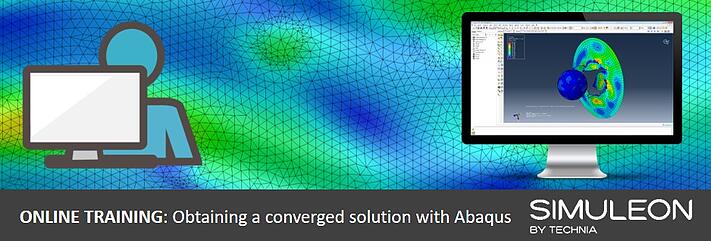Sometimes the results I get from Abaqus are not what I expect. Perhaps the analysis does not complete while I didn't think it would be very troublesome, or I do get results, but they don't make sense to me. Though this can be very frustrating, it can also be seen as an interesting puzzle (especially if it is somebody else's problem ;) ). For that reason, I'd like to share some results with you that did not make sense to me. Let's see whether you can figure out what went wrong!
The Problem
I wanted to simulate a long, thin structure with relatively large displacements. I chose fiber winding for this, similar to this blog. I drew a fiber and a reel. The reel was modeled as a discrete rigid. I applied some pretension and let the reel rotate. This is what happened:
Not what I expected. So what do you think is going on?
I can give some hints:
- It's still there if I switch perspective off.
- Only including the rigid body from different sides contouring the displacement, gives this:
It doesn't look very rigid, does it?
Still, I'm 100% sure that it is modelled as a rigid body.
[And no, it is not a bug in the software. 😜]
So What Can It Be?
Some more hints:
- It was a stupid mistake.
- Abaqus was already open when I started doing this. If I would have used a fresh version, I wouldn't have had the issue.
- By changing one setting back to the default, I can get the expected result with the same odb:
What was the setting?
Conclusion
I hope you enjoyed thinking about this. I think it nicely shows that while I may be tempted to look for 'big' causes, sometimes the actual problem is so small that I overlook it.
In order to find the cause of problems - big or small - it helps to understand what the software does, what can typically go wrong and where to look for symptoms. Our online convergence training called "Obtaining a converged solution with Abaqus" will help you do just that, so hopefully you will see (convergence) issues more as a puzzle than as a problem.







